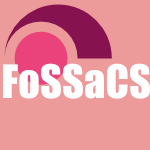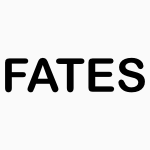39 papers:
 HT-2015-PrasetyoH #predict
HT-2015-PrasetyoH #predict- Twitter-based Election Prediction in the Developing World (NDP, CH), pp. 149–158.
 ICALP-v2-2015-AlistarhG #polynomial #protocol
ICALP-v2-2015-AlistarhG #polynomial #protocol- Polylogarithmic-Time Leader Election in Population Protocols (DA, RG), pp. 479–491.
 CHI-2015-Boulus-RodjeB #challenge #design #distributed
CHI-2015-Boulus-RodjeB #challenge #design #distributed- Design Challenges in Supporting Distributed Knowledge: An Examination of Organizing Elections (NBR, PB), pp. 3137–3146.
 CASE-2014-LuXJ #markov #process
CASE-2014-LuXJ #markov #process- A Markov Decision Process model for elective inpatient admission with delay announcement (YL, XX, ZJ), pp. 552–557.
 FM-2014-WenMM #analysis #formal method #information management #towards
FM-2014-WenMM #analysis #formal method #information management #towards- Towards a Formal Analysis of Information Leakage for Signature Attacks in Preferential Elections (RW, AM, CM), pp. 595–610.
 HT-2013-WeiHGLZW #analysis #behaviour #case study #twitter
HT-2013-WeiHGLZW #analysis #behaviour #case study #twitter- Mainstream media behavior analysis on Twitter: a case study on UK general election (ZW, YH, WG, BL, LZ, KFW), pp. 174–178.
 CSCW-2013-Franklin-Hodge #how #internet
CSCW-2013-Franklin-Hodge #how #internet- Digital democracy: how the internet re-elected a president (JFH), pp. 3–4.
 DUXU-WM-2013-HarrellFNCQ #usability
DUXU-WM-2013-HarrellFNCQ #usability- Usability of County Election Websites (CH, AF, EN, DC, WQ), pp. 193–202.
 OCSC-2013-AdlerA #network #social
OCSC-2013-AdlerA #network #social- The Influence of Social Networking Sites on Participation in the 2012 Presidential Election (RFA, WDA), pp. 233–239.
 KDD-2013-Ghani #scalability #social
KDD-2013-Ghani #scalability #social- Targeting and influencing at scale: from presidential elections to social good (RG), p. 1137.
 CADE-2013-BeckertGS #algorithm #logic
CADE-2013-BeckertGS #algorithm #logic- Analysing Vote Counting Algorithms via Logic — And Its Application to the CADE Election Scheme (BB, RG, CS), pp. 135–144.
 KR-2012-ConitzerX #approach #approximate #multi
KR-2012-ConitzerX #approach #approximate #multi- Paradoxes of Multiple Elections: An Approximation Approach (VC, LX).
 SIGIR-2012-DangC #approach
SIGIR-2012-DangC #approach- Diversity by proportionality: an election-based approach to search result diversification (VD, WBC), pp. 65–74.
 QoSA-ISARCS-2011-CostaM #logic
QoSA-ISARCS-2011-CostaM #logic- Elective temporal logic (GC, IM), pp. 143–152.
 ICDAR-2011-SmithLNW #towards
ICDAR-2011-SmithLNW #towards- Towards Improved Paper-Based Election Technology (EHBS, DPL, GN, ZW), pp. 1255–1259.
 CASE-2010-KrishnanSPW
CASE-2010-KrishnanSPW- Durability studies of PBI-based membrane elect rode assemblies for high temperature PEMFCs (LK, TS, RP, DW), pp. 21–26.
 ICDAR-2009-LoprestiZHT #analysis #documentation
ICDAR-2009-LoprestiZHT #analysis #documentation- Document Analysis Support for the Manual Auditing of Elections (DPL, XZ, XH, GT), pp. 733–737.
 ICALP-v2-2009-KowalskiP #ad hoc #network
ICALP-v2-2009-KowalskiP #ad hoc #network- Leader Election in Ad Hoc Radio Networks: A Keen Ear Helps (DRK, AP), pp. 521–533.
 CIKM-2009-NusselderPSM #information management #people #web
CIKM-2009-NusselderPSM #information management #people #web- Helping people to choose for whom to vote. a web information system for the 2009 European elections (AN, HP, AS, MM), pp. 2095–2096.
 SAC-2009-SantosHS
SAC-2009-SantosHS- Latency-aware leader election (NS, MH, AS), pp. 1056–1061.
 DAC-2008-SparksWBLCPHR #industrial #what
DAC-2008-SparksWBLCPHR #industrial #what- Election year: what the electronics industry needs---and can expect---from the incoming administration (TS, PW, LB, RL, TC, CP, VH, CR), pp. 76–77.
 STOC-2006-Antonakopoulos #bound #performance #protocol
STOC-2006-Antonakopoulos #bound #performance #protocol- Fast leader-election protocols with bounded cheaters’ edge (SA), pp. 187–196.
 FoSSaCS-2004-ChalopinM
FoSSaCS-2004-ChalopinM- Election and Local Computations on Edges (JC, YM), pp. 90–104.
 ICGT-2004-ChalopinMZ
ICGT-2004-ChalopinMZ- Election, Naming and Cellular Edge Local Computations (JC, YM, WZ), pp. 242–256.
 FATES-2004-ArtsCS #development #erlang #fault tolerance #protocol
FATES-2004-ArtsCS #development #erlang #fault tolerance #protocol- Semi-formal Development of a Fault-Tolerant Leader Election Protocol in Erlang (TA, KC, HS), pp. 140–154.
 ICEIS-v4-2003-ProsserKK #experience #implementation
ICEIS-v4-2003-ProsserKK #experience #implementation- Implementing an Internet-Based Voting System for Public Elections — A Project Experience (AP, RK, RK), pp. 28–33.
 FoSSaCS-2002-GodardM #graph #product line
FoSSaCS-2002-GodardM #graph #product line- A Characterization of Families of Graphs in Which Election Is Possible (EG, YM), pp. 159–172.
 WRLA-2000-VerdejoPM #maude #protocol
WRLA-2000-VerdejoPM #maude #protocol- The Leader Election Protocol of IEEE 1394 in Maude (AV, IP, NMO), pp. 383–404.
 STOC-1999-RussellSZ #bound
STOC-1999-RussellSZ #bound- Lower Bounds for Leader Election and Collective Coin-Flipping in the Perfect Information Model (AR, MES, DZ), pp. 339–347.
 ICALP-1999-NichitiuR #automaton
ICALP-1999-NichitiuR #automaton- Leader Election by d Dimensional Cellular Automata (CMN, ER), pp. 565–574.
 ICEIS-1999-FanCY
ICEIS-1999-FanCY- Blind Signatures with Double-Hashes Messages for Fair Electronic Elections and Ownership Claimable Digital Cash (CIF, WKC, YSY), pp. 612–618.
 ICALP-1997-HemaspaandraHR #analysis #parallel
ICALP-1997-HemaspaandraHR #analysis #parallel- Exact Analysis of Dodgson Elections: Lewis Carroll’s 1876 Voting System is Complete for Parallel Access to NP (EH, LAH, JR), pp. 214–224.
 STOC-1996-Zuckerman
STOC-1996-Zuckerman- Randomness-Optimal Sampling, Extractors, and Constructive Leader Election (DZ), pp. 286–295.
 STOC-1994-BenalohT
STOC-1994-BenalohT- Receipt-free secret-ballot elections (extended abstract) (JCB, DT), pp. 544–553.
 STOC-1994-OstrovskyRV #performance
STOC-1994-OstrovskyRV #performance- Simple and efficient leader election in the full information model (RO, SR, UVV), pp. 234–242.
 STOC-1993-CooperL #linear #performance #protocol
STOC-1993-CooperL #linear #performance #protocol- Fast perfection-information leader-election protocol with linear immunity (JC, NL), pp. 662–671.
 STOC-1987-Awerbuch #algorithm #distributed #problem #summary
STOC-1987-Awerbuch #algorithm #distributed #problem #summary- Optimal Distributed Algorithms for Minimum Weight Spanning Tree, Counting, Leader Election and Related Problems (Detailed Summary) (BA), pp. 230–240.
 STOC-1984-FredericksonL #communication #problem
STOC-1984-FredericksonL #communication #problem- The Impact of Synchronous Communication on the Problem of Electing a Leader in a Ring (GNF, NAL), pp. 493–503.
 STOC-1984-Vitanyi #distributed
STOC-1984-Vitanyi #distributed- Distributed Elections in an Archimedean Ring of Processors (Preliminary Version) (PMBV), pp. 542–547.
 HT-2015-PrasetyoH #predict
HT-2015-PrasetyoH #predict ICALP-v2-2015-AlistarhG #polynomial #protocol
ICALP-v2-2015-AlistarhG #polynomial #protocol CHI-2015-Boulus-RodjeB #challenge #design #distributed
CHI-2015-Boulus-RodjeB #challenge #design #distributed CASE-2014-LuXJ #markov #process
CASE-2014-LuXJ #markov #process FM-2014-WenMM #analysis #formal method #information management #towards
FM-2014-WenMM #analysis #formal method #information management #towards HT-2013-WeiHGLZW #analysis #behaviour #case study #twitter
HT-2013-WeiHGLZW #analysis #behaviour #case study #twitter CSCW-2013-Franklin-Hodge #how #internet
CSCW-2013-Franklin-Hodge #how #internet DUXU-WM-2013-HarrellFNCQ #usability
DUXU-WM-2013-HarrellFNCQ #usability OCSC-2013-AdlerA #network #social
OCSC-2013-AdlerA #network #social KDD-2013-Ghani #scalability #social
KDD-2013-Ghani #scalability #social CADE-2013-BeckertGS #algorithm #logic
CADE-2013-BeckertGS #algorithm #logic KR-2012-ConitzerX #approach #approximate #multi
KR-2012-ConitzerX #approach #approximate #multi SIGIR-2012-DangC #approach
SIGIR-2012-DangC #approach QoSA-ISARCS-2011-CostaM #logic
QoSA-ISARCS-2011-CostaM #logic ICDAR-2011-SmithLNW #towards
ICDAR-2011-SmithLNW #towards CASE-2010-KrishnanSPW
CASE-2010-KrishnanSPW ICDAR-2009-LoprestiZHT #analysis #documentation
ICDAR-2009-LoprestiZHT #analysis #documentation ICALP-v2-2009-KowalskiP #ad hoc #network
ICALP-v2-2009-KowalskiP #ad hoc #network CIKM-2009-NusselderPSM #information management #people #web
CIKM-2009-NusselderPSM #information management #people #web SAC-2009-SantosHS
SAC-2009-SantosHS DAC-2008-SparksWBLCPHR #industrial #what
DAC-2008-SparksWBLCPHR #industrial #what STOC-2006-Antonakopoulos #bound #performance #protocol
STOC-2006-Antonakopoulos #bound #performance #protocol FoSSaCS-2004-ChalopinM
FoSSaCS-2004-ChalopinM ICGT-2004-ChalopinMZ
ICGT-2004-ChalopinMZ FATES-2004-ArtsCS #development #erlang #fault tolerance #protocol
FATES-2004-ArtsCS #development #erlang #fault tolerance #protocol ICEIS-v4-2003-ProsserKK #experience #implementation
ICEIS-v4-2003-ProsserKK #experience #implementation FoSSaCS-2002-GodardM #graph #product line
FoSSaCS-2002-GodardM #graph #product line WRLA-2000-VerdejoPM #maude #protocol
WRLA-2000-VerdejoPM #maude #protocol STOC-1999-RussellSZ #bound
STOC-1999-RussellSZ #bound ICALP-1999-NichitiuR #automaton
ICALP-1999-NichitiuR #automaton ICEIS-1999-FanCY
ICEIS-1999-FanCY ICALP-1997-HemaspaandraHR #analysis #parallel
ICALP-1997-HemaspaandraHR #analysis #parallel STOC-1996-Zuckerman
STOC-1996-Zuckerman STOC-1994-BenalohT
STOC-1994-BenalohT STOC-1994-OstrovskyRV #performance
STOC-1994-OstrovskyRV #performance STOC-1993-CooperL #linear #performance #protocol
STOC-1993-CooperL #linear #performance #protocol STOC-1987-Awerbuch #algorithm #distributed #problem #summary
STOC-1987-Awerbuch #algorithm #distributed #problem #summary STOC-1984-FredericksonL #communication #problem
STOC-1984-FredericksonL #communication #problem STOC-1984-Vitanyi #distributed
STOC-1984-Vitanyi #distributed









